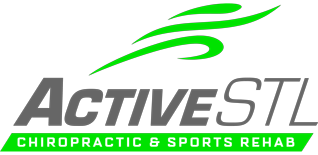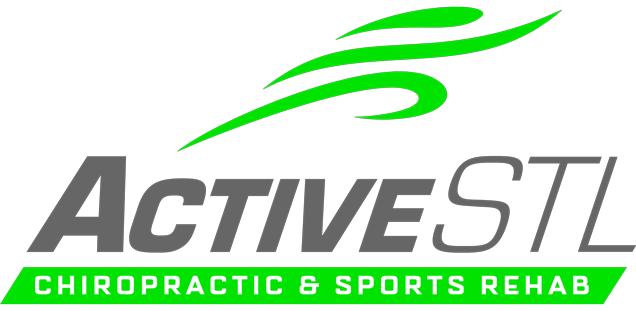
Headaches are far and away one of the most common symptoms that we see from our patients here in our St. Louis community. What most people don’t realize is that there are several different types of headaches, and each type of headache often has a totally different cause of pain.
We’ll be going over:
- How do we differentiate the different types of headaches when they present as symptoms here in our chiropractic office
- How we manage different types of headaches with chiropractic care, active release techniques, exercise, and at-home tips
- We will talk about some headaches that frankly chiropractic care might not help
Some of the more common headaches that we will discuss are:
- Migraines – Sharp/Stabbing pain behind the eye. These can be debilitating!
- Tension Headaches – Feels like you have a baseball cap around your head
- Cervicogenic Headaches – Usually the result of tight muscles at the base of the skull and joints from in the neck
We look forward to a deeper dive into these types of headaches, how we diagnose them in our office, and how we can help in treating/managing these conditions to get you out of pain!
MIGRAINE HEADACHES
Let’s talk about migraines. If you have ever suffered from one, you know, that it can be debilitating. Some of the common symptoms of migraine headaches are:
- “Stabbing” Pain
- Dizziness
- Nausea
- An “aura” (which we will discuss in more detail below)
The “Aura”
Patients who suffer from migraines often say that they notice an “aura” a few hours prior to experiencing any symptoms. Some patients commonly describe the aura as being sensitive to light or sound. These auras usually act as a warning to the chronic migraine sufferer that is followed by escaping to a dark room, closing the door, shutting the curtains, and attempting to sleep it off.
What Causes Migraines
Sometimes there are direct triggers that we know of. For example, if I drink too much caffeine, I’m going to have a migraine. Therefore I know that I need to limit caffeine intake. Other times there are not any known triggers that cause migraines. In this case, the origin is likely the result of some type of neurological imbalance.
Some Common Migraine Triggers Are:
- Stress Levels
- Caffeine Intake
- Not eating enough
- Unhealthy Sleeping Patterns
- Physical Exertion
Treatment for Migraines
Treating Migraines with Medication
Because migraines are so complex, they are one of those headaches that will need to be treated with medication from time to time. Therefore, often times we will refer these cases to a neurologist for co-management.
Treating Migraines with Chiropractic Care
Our optimal goal in our migraine patients is to maintain a healthy range of motion in the neck. Although there is no direct correlation between the loss of range of motion in the neck and migraines, we do see that some of our migraine patients respond favorably to this type of care and tend to report that their symptoms relieve faster.
Muscular and postural imbalances can also play a role in migraine headaches. Just like any imbalance that we treat in our St. Louis office, we treat migraine cases with strengthening and stability exercises.
One of the most commonly overlooked components of a migraine care plan is education. We educate our patients on the negative effects of prolonged sitting or looking down for too long (reading or looking at your phone). These postures, which involve tucking our chin down towards our chest, place a ton of pressure on the muscles, the nerves, and the ligaments of the back of our neck.
The ActiveSTL Approach to Treating Migraines
Can we relieve any pressure anywhere else that might cut down your frequency or severity of migraines or do we need to maybe refer out to a neurologist? We are always open to those conversations. We love co-managing with other providers here in St. Louis. And we’re here to help. So reach out with any questions you might have about migraine headaches!
TENSION HEADACHES
Tension headaches are arguably one of the most common types of headaches that we treat here in our St. Louis community. These are the types of headaches that go around your head like a baseball cap. Tension headaches tend to start near the back of the head, and can present as either one-sided or bilateral.
Research shows that tension headaches will be felt in the neck, and sometimes even in the shoulders. These tension-type headaches are caused by trigger points in the muscles, and a lack of motion in your neck.
All of this tension then presents as the pain that goes around your head
The good news is these types of headaches can be helped more times than not conservatively with modalities such as Active Release Techniques (ART) or Chiropractic care!
The ActiveSTL Approach to Tension Headaches
Chiropractic Care
The chiropractic adjustment can be a powerful tool to restore mobility to joint blockages in the neck. When these joint blockages occur, they cause an increase in tone and tension of the associated muscles.
A classic example of this is a muscle called Levator Scapulae. This muscle runs from the point of your shoulder blade to the base of your skull. When it gets tight it tugs on the back side of your head causing headache symptoms.
Active Release Techniques (ART)
ART is a world-renowned soft-tissue treatment. Dr. Donahue is full-body certified in ART and is able to use these techniques to help alleviate some of the tension in the muscles, with the goal of reducing symptoms.
Education
Educating patients on proper shoulder and neck position is vital in helping to prevent tension headaches.
Strengthening Exercises
The two areas that we tend to look to strengthen in these cases are deep neck flexors and scapular stability. Strengthening these areas can make you more injury-resilient when dealing with poor postures.
If you’re having recurring headaches and over-the-counter medications like Advil and Tylenol aren’t working, it may be time to give our team at ActiveSTL a call!
CERVICOGENIC HEADACHES
What is a cervicogenic headache? Often, it is caused by a dysfunction in the cervical spine where segments in the neck are not moving properly. In other words, this means when moving our head and neck through its full range of motion, such as looking side to side, looking up and down, and even tilting the head from side to side. When there is cervical spine dysfunction, one or even more of those movements are harder to perform.
In our necks, 3 specific segments sit higher up towards our skull that can be the common culprits in the cause of cervicogenic headaches. Just like mentioned above, these segments can have a loss of movement and decrease the overall neck range of motion.
One or more of these crucial motions can be lost due to something like a car accident that can create a trauma called whiplash or just any event that causes a quick sudden motion of the neck. Posture can also play a role in decreasing the motion in the segments of the neck. For example, sitting at a desk or looking down at a phone all day in a hunched-over position where our neck is forced into a forward position to look down can contribute to cervicogenic headaches.
Symptoms of cervicogenic headaches:
- One side
- Dull
- Non-throbbing
- Constant
- Can wrap to the front of the face, towards the eye
Symptoms of a migraine:
- Light sensitivity
- Noise sensitivity
- Nausea
- Vomiting
- Debilitating
Often the pain will start in the neck and there will be no headaches associated with the neck pain. Then over time, the pain will slowly move higher and higher on your neck until it reaches your head and then presents as a headache.
Muscles associated with Cervicogenic headaches:
- Upper Trapezius
- Levator Scapulae
- The Scalenes
- Sub-occipital muscles
You may also experience some shoulder and upper arm pain that can be associated with the headache. All the muscle tightness will restrict motion segments once again and contribute to the cause of the headaches.
Cervicogenic headache symptoms can last anywhere from an hour up to a week, it will often be dependent on how restricted in motion the neck is and what movements create that cervicogenic headache.
How do we treat cervicogenic headaches?
- Adjust
- Mobilize
- Rehab
Rehab often will become the most important part of treatment to help strengthen the muscles in the neck and around the head to keep that proper motion and posture of the cervical spine. Rehab will help address general posture and keep you out of the poor posture patterns that can lead to tight muscles which can then lead to headaches.
Overall, treatment will consist of adjustments and/or mobilizations to restore the motion in our cervical spine and release tension from the muscles that can create cervicogenic headaches. The timeline of treatment can depend on how fast a person responds, it can be quick and can abolish the headaches quickly and other times treatment can be slower and take closer to 3 months.


